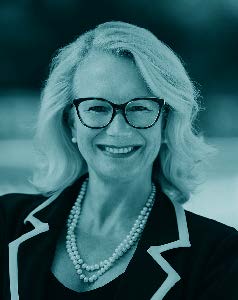
BY CATHERINE BROWNLEE,
PRESIDENT OF ALBERTA ENTERPRISE GROUP (AEG), CALGARY AND EDMONTON CHAPTERS
The Controlled Environment Agriculture (CEA) industry is rapidly growing across the Middle East, driven by abundant energy resources, government policies and a focus on food security. Traditionally, the region relied on imported produce, but recent innovations and investments in CEA are transforming this dynamic. Countries such as the UAE and Saudi Arabia are leading the charge, leveraging abundant energy to produce high-quality vegetables and leafy greens year-round. This development has not only reduced the region’s reliance on imports but also enabled it to become an exporter of produce, offering a blueprint for other energy-rich regions like Alberta to follow.
For example, the UAE’s Pure Harvest Smart Farms operates advanced indoor farming facilities that use optimized LED lighting and climate control systems to produce leafy greens, tomatoes and strawberries. Similarly, Saudi Arabia’s Vision 2030 has made CEA a central component of its agricultural strategy. A recent success story saw a local Saudi Arabian company, Dava Agricultural Co, ship the first-ever export of fresh tomatoes to Europe from the Gulf nation.
Government policies have been a crucial enabler of CEA’s rapid growth in the Middle East. In the UAE, the government has introduced subsidies and streamlined regulations to attract investment in CEA technology, while Saudi Arabia’s partnerships with global firms are transferring knowledge and technology to boost sustainable agriculture.
The availability of affordable energy, primarily from natural gas, has also played a significant role in making CEA economically viable. Large-scale vertical farms and greenhouses require substantial energy for lighting, automation and climate control, but the Middle East’s energy resources have allowed it to develop a profitable and sustainable CEA industry.
In contrast, Alberta is still in the early stages of CEA development, but holds significant potential. The province benefits from its reliable, inexpensive energy supply— primarily natural gas—which is essential for powering energy-intensive vertical farms. Alberta also boasts a strong agricultural heritage and infrastructure that supports farming innovation.
Companies like GoodLeaf Farms and NuLeaf Farms are pioneering indoor farming in the province, though their scale is smaller compared to Middle Eastern CEA leaders like Pure Harvest.
While Alberta has many of the right ingredients for success, including energy and innovation, it currently lacks the government-driven policies and incentives that have fueled growth in the Middle East.
Where Alberta excels is in its potential to integrate CEA into its broader sustainability goals. To fully compete with the rapid growth seen in the Middle East, Alberta needs increased investment, targeted government policies and a focus on talent development.
On a positive note, educational institutions are beginning to recognize the importance of this industry, with indoor agriculture programs being introduced to foster expertise in CEA. A good example is the recently introduced Indoor Agriculture Certificate from Olds College, which will go a long way in providing the workforce required to grow the CEA industry in Alberta.
The next steps for Alberta include aligning government policies with industry needs, investing in infrastructure, and developing a skilled workforce to support the growth of CEA, potentially reversing the flow of agricultural trade from the U.S. just as the Middle East has successfully done.

